Keywords play a crucial role in determining the visibility of your website on search engines. It is important to understand their significance if you want potential customers to easily find your website.
Effective search engine optimization heavily relies on strategically using the right keywords throughout your content.
Keywords serve as seeds that help search engines comprehend the essence of your content. Their power should not be underestimated.
In this comprehensive guide, we will demystify the art and science of keywords in SEO. We’ll explore their various types, learn about their significance, and uncover effective strategies to leverage their full potential to enhance your website’s visibility.
- What are Keywords in SEO?
- Introduction: The Importance of Keywords in SEO
- What are the Different Types of SEO Keywords?
- Understanding the Basics of Keyword Research
- How to Find Relevant Keywords for Your Website
- Analyzing Search Volume and Competition for Effective Keyword Selection
- How to Research Keywords for Your SEO Strategy and Formulate a Content Strategy
- Optimizing Your Website with Targeted Keywords
- How to Incorporate Keywords into Your Content?
- Additional FAQs on Keywords in SEO
- Conclusion: Keywords in SEO
What are Keywords in SEO?
When people search for information on the internet, they use specific words or phrases called keywords.
In search engine optimization (SEO), keywords are essential for enhancing a website’s ranking on search engine results pages (SERPs) and drawing in relevant organic traffic.
Incorporating the right keywords strategically into website content is essential for optimizing its visibility in search engines.
When users enter a query into a search engine, it scans countless web pages to provide the most relevant results. By including targeted keywords, websites increase their chances of appearing prominently on SERPs and capturing the attention of potential visitors.
Introduction: The Importance of Keywords in SEO
Keywords are the foundation of any successful SEO strategy.
Effective keyword usage helps search engines understand the relevance and purpose of your web pages. Well-researched keywords can significantly impact your website’s visibility and organic traffic.
Keywords play a crucial role in search engine optimization (SEO). They bridge what users are searching for and the content you provide on your website.
To increase your visibility on search engine results pages and draw in more natural traffic, it’s important to intelligently integrate pertinent keywords into your web content.
Keywords are like signposts guiding search engines and users toward your website.
By using targeted keywords, you signal to search engines what your content is about, helping them understand its context and relevance. This allows search engines to deliver more accurate results to users when they conduct searches related to your industry or niche.
One of the primary goals of SEO is to increase organic traffic, which refers to visitors who find your website through unpaid search results rather than paid advertisements. Well-researched keywords can help drive this organic traffic by ensuring your content appears in front of the right audience at the right time.
To optimize your website for specific keywords effectively, it is essential to conduct thorough keyword research. This involves identifying popular search terms that are relevant to your business or industry and aligning them with the intent behind each webpage on your site.
When researching keywords, consider their popularity, competition level, and relevance to ensure you choose phrases that will give you a competitive edge.
Tools like Google Keyword Planner or SEMrush can assist you in finding valuable insights into keyword volume, trends, and competitor analysis.
Once you have identified suitable keywords for each webpage, it’s crucial to incorporate them naturally within different elements such as titles, headings, meta descriptions, URLs, image alt-tags, and throughout the body text.
However, it’s important to strike a balance and avoid keyword stuffing, as search engines may penalize websites that engage in this practice.
In addition to optimizing your website for keywords, creating high-quality, informative content that satisfies the user’s search intent is essential.
When users find value in your content and spend more time on your website, search engines interpret this as a positive signal of relevance and quality. This can further improve your rankings and increase organic traffic.
To summarize, keywords are the backbone of any successful SEO strategy.
By conducting thorough research and naturally incorporating relevant keywords into your web pages, you can enhance your website’s visibility in search engine results pages.
Remember, effective SEO is an ongoing process that requires continuous monitoring and adaptation to stay ahead of the competition.
What are the Different Types of SEO Keywords?
Understanding the different types of SEO keywords is essential for creating an effective SEO strategy.
In this section, we will explore various types of keywords that can be used to optimize a website for search engines.
By utilizing these different types of keywords strategically, you can improve your website’s visibility and attract the right audience.
Broad Match Keywords
Broad match keywords encompass a wide range of related terms and variations. These keywords are more general and target a broader audience.
For example, if you have an online shoe store, a broad match keyword could be “shoes.” This keyword would include various types of shoes, such as sneakers, heels, boots, and sandals.
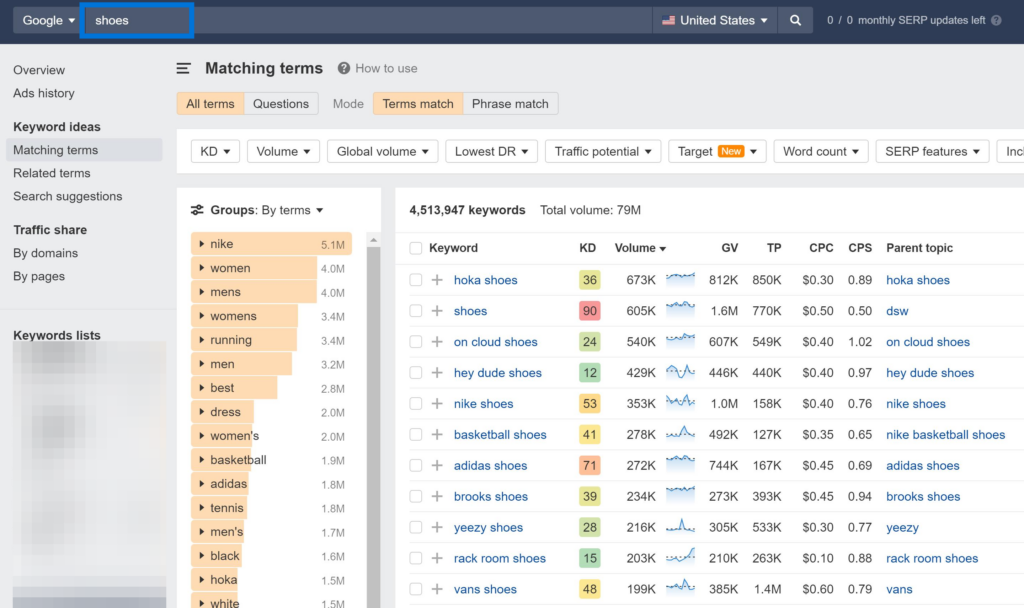
Using broad match keywords allows your website to appear in search results for a wide range of related searches.
While broad match keywords can bring in more traffic, they may also result in lower conversion rates. Since these keywords cast a wider net, they may attract visitors who aren’t specifically interested in what your website offers.
However, they can still be useful for increasing brand visibility and generating awareness.
Long-Tail Keywords
On the other hand, long-tail keywords consist of longer, more specific phrases with lower competition but higher conversion potential. These keywords target users who are closer to making a purchase or seeking specific information.
Continuing with the online shoe store example, a long-tail keyword could be “women’s black leather ankle boots.“

Long-tail keywords help you reach your target audience more effectively by narrowing down their search intent.
Although they may generate less overall traffic compared to broad match keywords, the visitors they attract are often more likely to convert into customers due to their specific needs.
LSI (Latent Semantic Indexing) Keywords
LSI (Latent Semantic Indexing) keywords are contextually related terms that enhance content relevancy.
Search engines use LSI technology to identify relationships between words and phrases within web pages. Including LSI keywords in your content helps search engines understand its context better.
For instance, if you’re writing an article about healthy eating habits, LSI keywords could include “nutrition,” “balanced diet,” or “healthy recipes.”
Incorporating these terms throughout your content signals relevance and improves your chances of ranking higher in search results.
Using LSI keywords also enhances the user experience by providing more comprehensive and valuable information.
By including these related terms, you can cover a broader range of topics within your content, making it more informative and engaging for readers.
Short-Tail Keywords
Short-tail keywords, also known as head keywords, are search phrases with only one or two words. They’re incredibly broad and typically have a high search volume.
For instance, if you run a travel blog, a short-tail keyword might be “vacations“. This could relate to any type of vacation – family vacations, romantic getaways, adventure holidays, and more.
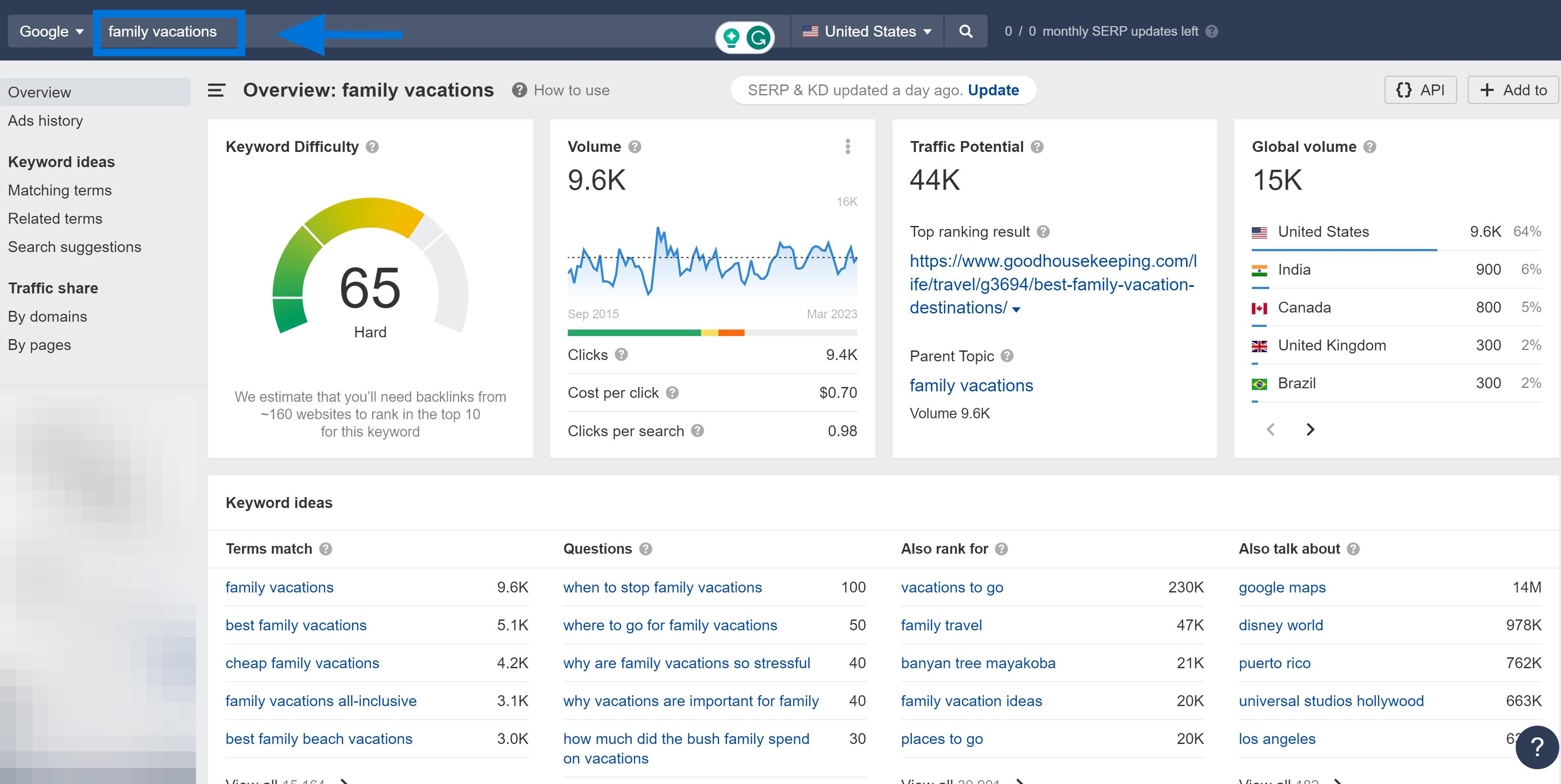
The potential downside to short-tail keywords is that they’re often highly competitive. Numerous businesses and websites might be trying to rank for the same short-tail keyword, making it harder for your site to stand out.
However, a well-optimized website with robust content can still benefit from using short-tail keywords to reach a wider audience.
Primary Keywords
Primary keywords are the main focus keywords in your content. These are the terms that you specifically want to rank for, and they’re central to the topic you’re discussing.
For example, if you’re creating a guide on “growing indoor plants,” then that’s your primary keyword.
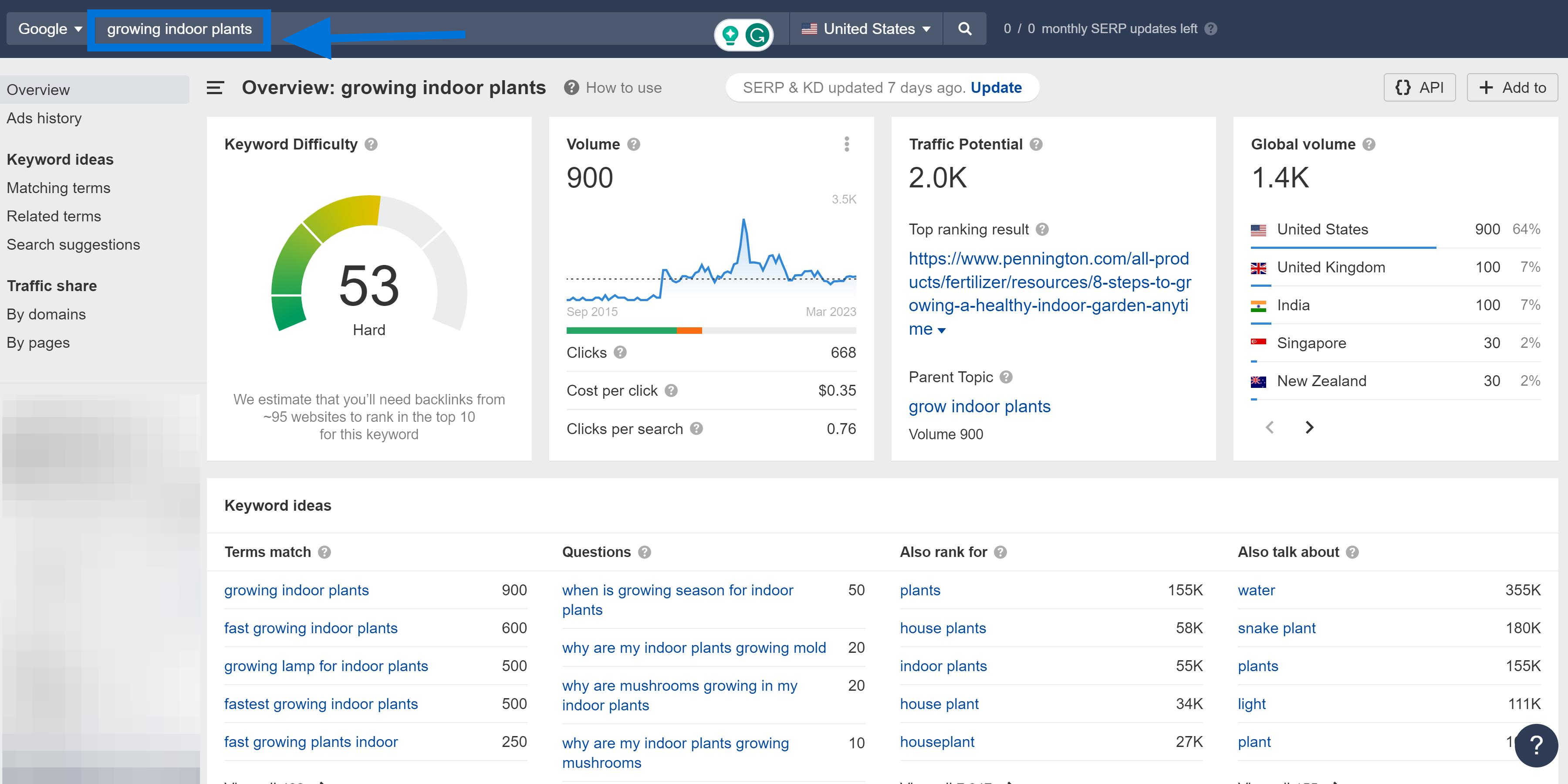
Your primary keyword should appear in key places in your content, like the title, meta description, and body text.
However, remember that keyword stuffing – the practice of overusing keywords at the expense of readability – is discouraged by search engines. So, use your primary keyword naturally and sparingly throughout your content.
Secondary Keywords
Secondary keywords are terms or phrases related to your primary keyword. They provide additional context and help to enrich your content.
If your primary keyword is “growing indoor plants,” secondary keywords might include “best indoor plants,” “indoor plant care,” or “benefits of indoor plants.”
Secondary keywords help your content rank for a wider variety of terms.
By including these related phrases, you can provide more comprehensive information to your readers and increase the chance of your content being found in search engines.
Geo-Targeting Keywords
Geo-targeting keywords are especially valuable for local businesses. These are specific to a geographical area and can help you attract local customers.
For example, a barber shop in Boston might use the geo-targeting keyword “Boston barber shop.”
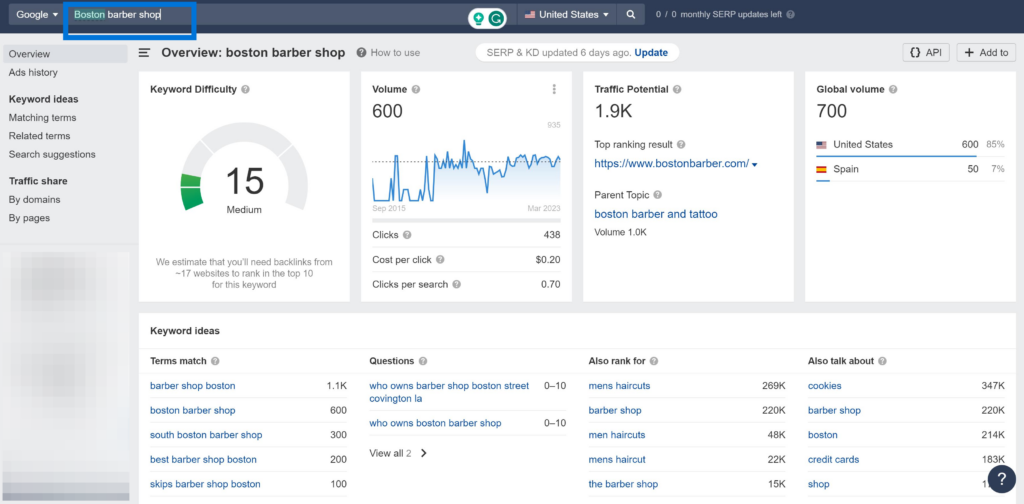
Using geo-targeting keywords is a powerful way to stand out in local search results. It can help you reach people who are specifically looking for businesses in your area, and it can also enhance the relevancy of your website for local queries.
Transactional Keywords
Transactional keywords are used when the searcher is at the end of the buying cycle. These keywords typically indicate a strong intention to make a purchase.
For example, a user searching for “buy running shoes online” or “best deals on laptops” is probably ready to buy.
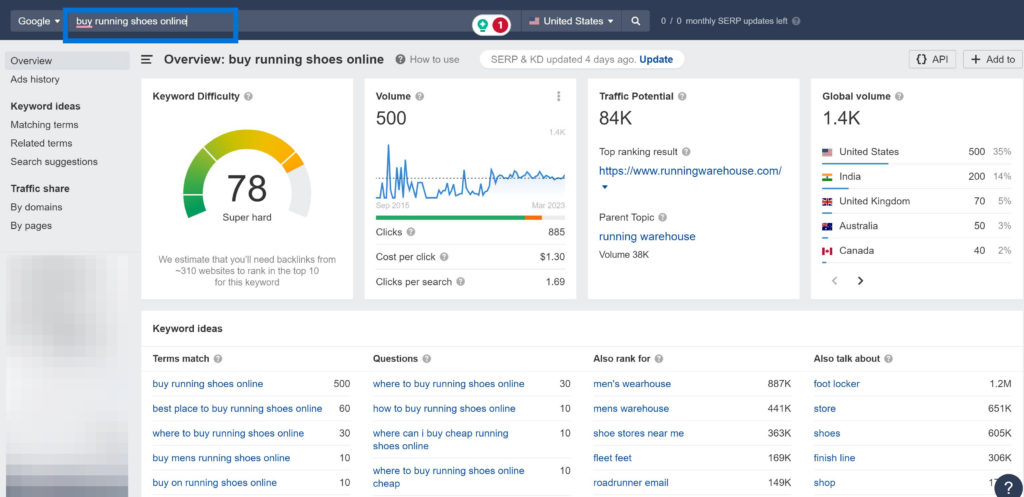
By targeting transactional keywords, you can attract users who are in the buying phase and are more likely to convert into customers. This can be especially beneficial for ecommerce sites looking to increase their sales.
Informational Keywords
Informational keywords are used by searchers who are looking for more information on a particular topic. They are often used in content that aims to educate, instruct, or answer specific questions.
For example, someone might search for “how to knit a sweater” or “benefits of yoga.”
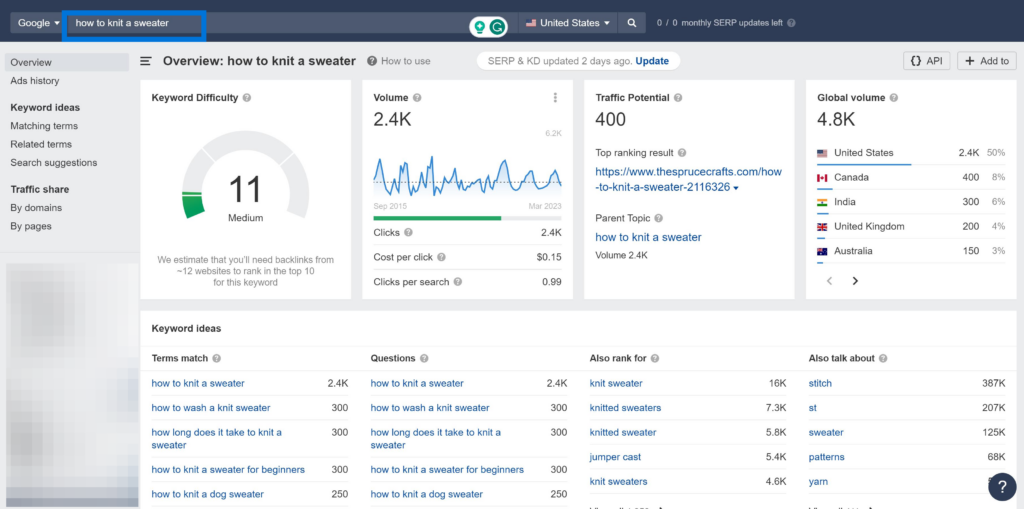
These keywords can be a great way to attract users to your site and establish your brand as an authority on certain topics.
Informational keywords are particularly effective for blogs, tutorials, and educational websites.
Navigational Keywords
Navigational keywords are used when a user is trying to find a particular website or webpage. These could include brand names or specific website functions.
For example, a user might search for “YouTube music videos” or “Amazon Kindle store.”
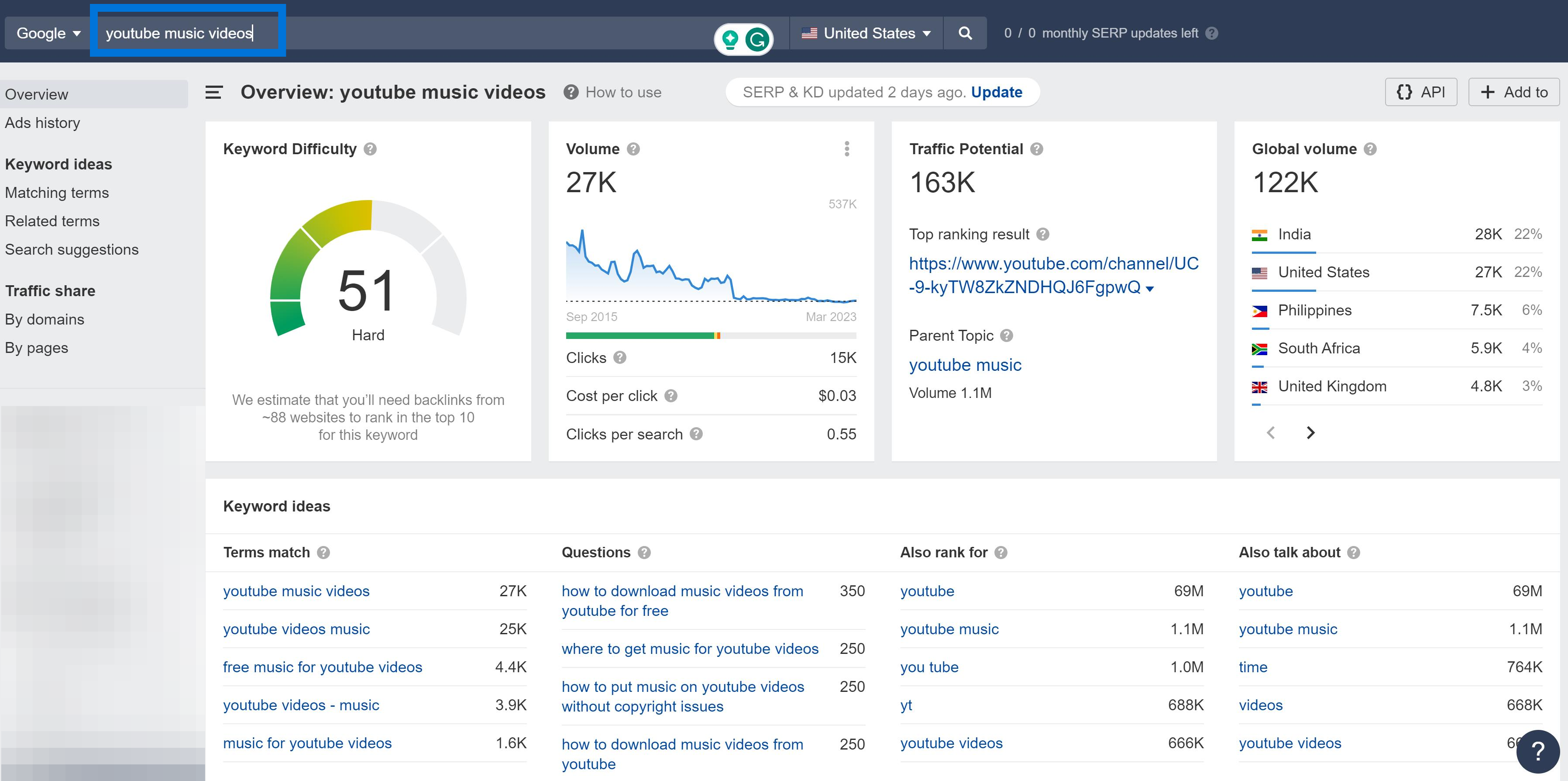
Ranking for navigational keywords can be tricky, especially if you’re trying to rank for a keyword associated with a popular brand or website.
However, these keywords can be beneficial if you’re looking to guide users to specific pages or features on your own website.
By understanding and properly using these different types of SEO keywords, you can improve the visibility, relevancy, and success of your website content.
Branded Keywords
Branded keywords refer to search terms that include the name of a specific brand or company. These keywords help users find a particular business or website when they’re looking for a specific brand.
For example, if you own a clothing brand called “Urban Chic,” a branded keyword could be “Urban Chic clothing.“
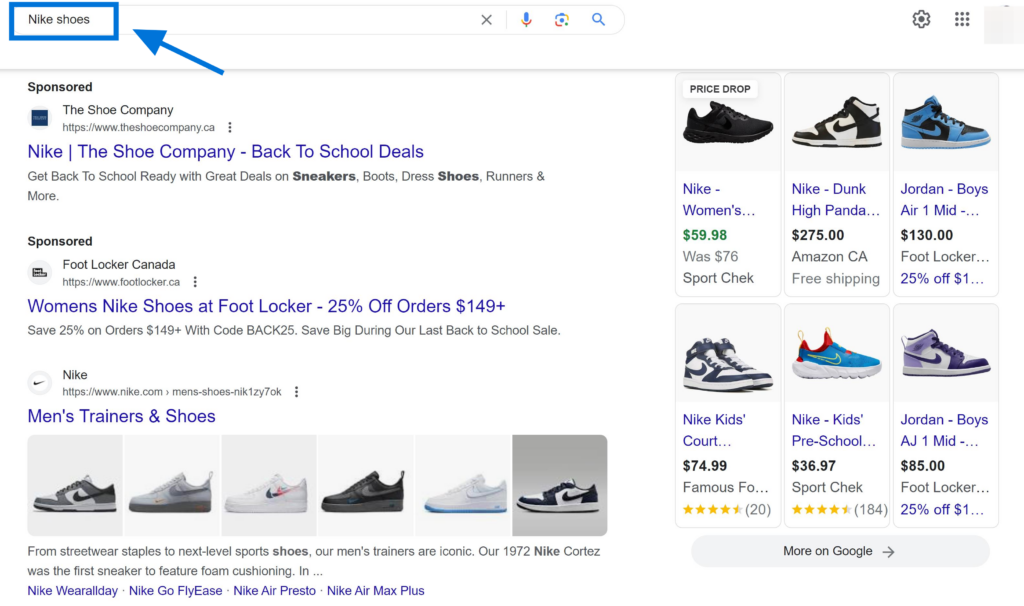
Using branded keywords is essential for strengthening brand awareness and driving targeted traffic to your website. By optimizing your content with branded keywords, you can increase your website’s visibility for users specifically interested in your brand.
Understanding the Basics of Keyword Research
Keyword research is a fundamental aspect of search engine optimization (SEO) that involves identifying popular and relevant search terms within your niche.
By understanding the basics of keyword research, you can uncover valuable insights about user intent and behavior, allowing you to optimize your website’s content and improve its visibility on search engines like Google.
One of the primary goals of keyword research is to identify the specific words and phrases that people use when searching for information related to your industry or topic. This process helps you understand what keywords are most relevant to your audience, enabling you to tailor your content accordingly.
Incorporating these keywords into your website’s pages, blog posts, and other content increases the likelihood of attracting organic traffic from search engines.
To conduct thorough keyword research, there are various tools available that can assist you in this process.
One such tool is the Google Keyword Planner. This free tool allows you to explore different keyword ideas based on specific topics or phrases related to your business. It provides data on average monthly searches and competition levels and even suggests additional keywords that may be relevant.
Another useful tool for keyword research is Google Trends. This platform allows you to analyze the popularity of specific search queries over time. Using Google Trends, you can gain insights into whether a particular keyword is increasing or decreasing in popularity and adjust your content strategy accordingly.
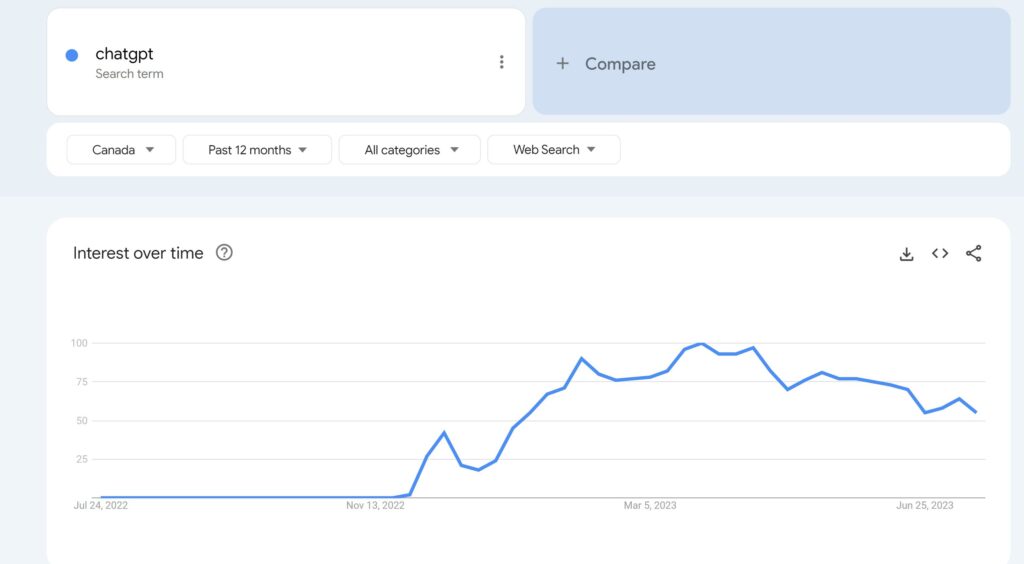
When conducting keyword research, it’s essential to organize your findings effectively. One way to do this is by creating “topic buckets” or categories based on similar keywords or themes.
Grouping related keywords together helps ensure that all aspects of a specific topic are covered in your content strategy.
In addition to identifying popular keywords, it’s also crucial to consider long-tail keywords — more specific phrases with lower search volumes but higher conversion potential.
Long-tail keywords often have less competition compared to broader terms and can help target users who are closer to making a purchasing decision.
Understanding user intent is another critical aspect of keyword research. By analyzing the search queries associated with specific keywords, you can gain insights into what users look for when performing those searches.
This knowledge allows you to create content that aligns with their needs and provides value, ultimately improving your website’s reputation and authority within your industry.
How to Find Relevant Keywords for Your Website
Start by Brainstorming Potential Topics and Themes Related to Your Business or Industry.
One of the first steps is to identify relevant keywords. These keywords are the terms that users enter into a search engine when looking for information or products related to your business.
To begin this process, start by brainstorming potential topics and themes that are closely associated with your industry.
Consider the main products or services you offer and what words or phrases customers might use when searching for them.
For example, if you run a bakery, some potential topics could include “freshly baked bread,” “delicious pastries,” or “custom cakes.“
Once you have a list of these potential topics, it’s time to dig deeper and find specific keywords within each topic.
Utilize Keyword Research Tools to Discover High-Volume, Low Competition Keywords Within Those Topics.
To discover popular keywords within your chosen topics, there are several keyword research tools available that can provide valuable insights. Google Keyword Planner allows you to enter a topic or keyword and provides data on its search volume and competition level.
Using the bakery example again, you can input “freshly baked bread” into the Google Keyword Planner. It will then generate a list of related keywords along with their average monthly search volumes and competition levels.
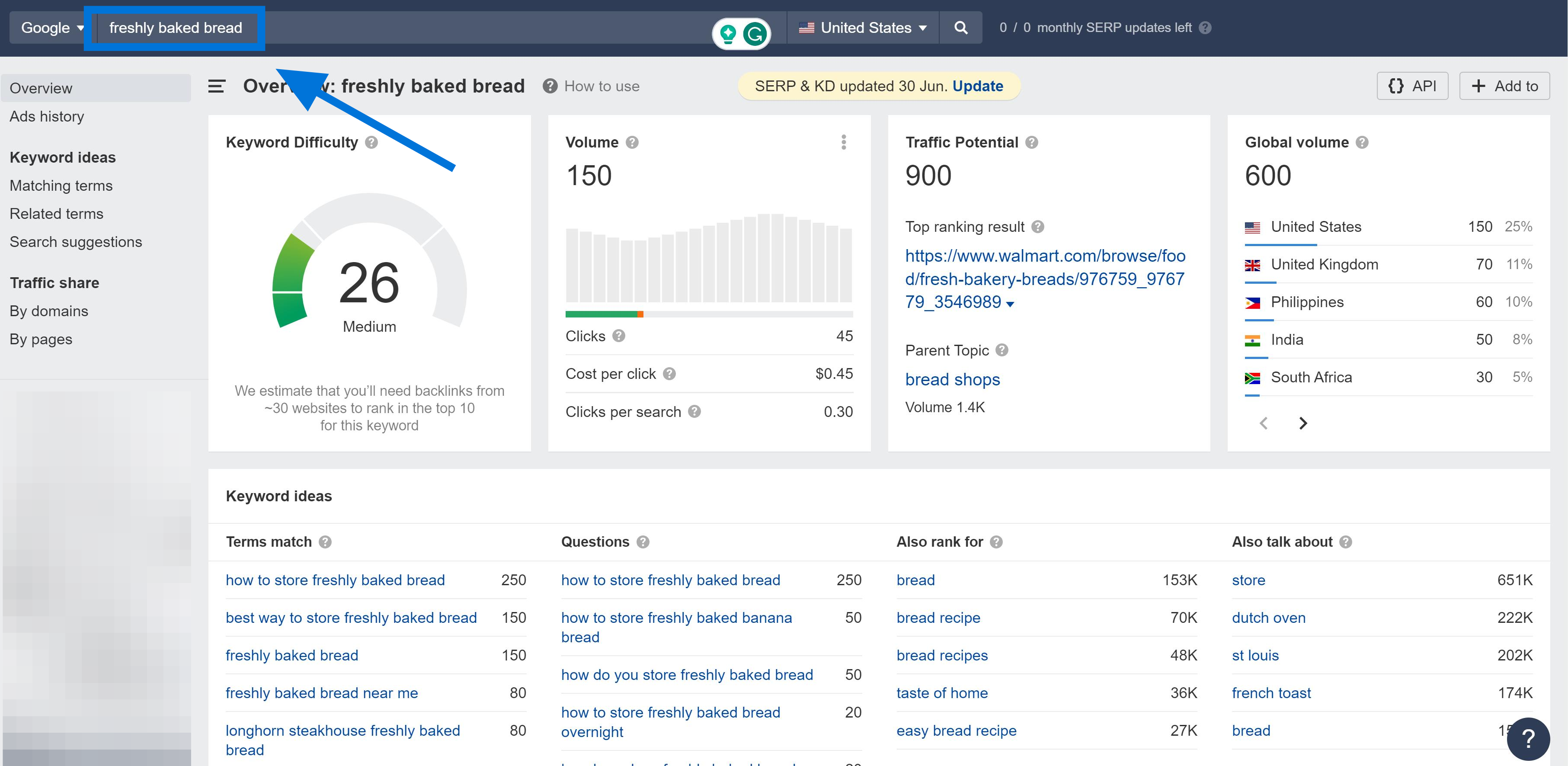
Look for keywords that have high search volumes but low competition, as these present great opportunities for ranking higher in search results.
Another option is to utilize other paid keyword online tools, such as SEMRush or Ahrefs. These tools often provide additional features such as competitor analysis, long-tail keyword suggestions, and trend data.
Analyze Competitor Websites to Identify Additional Relevant Keywords They May Be Targeting.
In addition to using keyword research tools, analyzing competitor websites can also help you uncover relevant keywords. Take some time to explore websites of businesses similar to yours and pay attention to the keywords they are targeting.
Look for common themes and patterns in their content.
What words or phrases do they frequently use?
Are there any keywords that seem to be driving traffic to their site?
By understanding the keywords your competitors are targeting, you can gain valuable insights into what is working well in your industry. This information can then inform your keyword strategy and help you stay competitive in search engine rankings.
Analyzing Search Volume and Competition for Effective Keyword Selection
Evaluating the monthly search volume for different keywords is crucial in optimizing your website’s visibility. By understanding the search volume of specific keywords, you can tailor your content to match what users are actively searching for.
Utilizing reliable tools such as SEMrush or Ahrefs can provide valuable insights into search volumes. These platforms offer comprehensive data on keyword popularity and trends, allowing you to identify which terms are most frequently searched by users.
One essential metric to consider is the keyword search volume. This metric indicates how many searches a particular keyword receives within a given timeframe, typically measured monthly. You understand their potential reach and demand by analyzing the search volumes of different keywords.
It’s important to note that while high search volumes may seem enticing, they often come with fierce competition. Instead of solely targeting highly competitive keywords with massive search volumes, it is advisable to strike a balance between visibility and competition.
Opting for moderately competitive keywords increases your chances of ranking higher in search results while attracting substantial traffic.
Another aspect worth considering is long-tail keywords. These phrases consist of three or more words and generally have lower search volumes compared to broader terms. However, long-tail keywords often possess higher conversion potential due to their specificity.
For instance, someone searching for “best running shoes for flat feet” demonstrates clear intent and is more likely to convert than someone searching for “running shoes.”
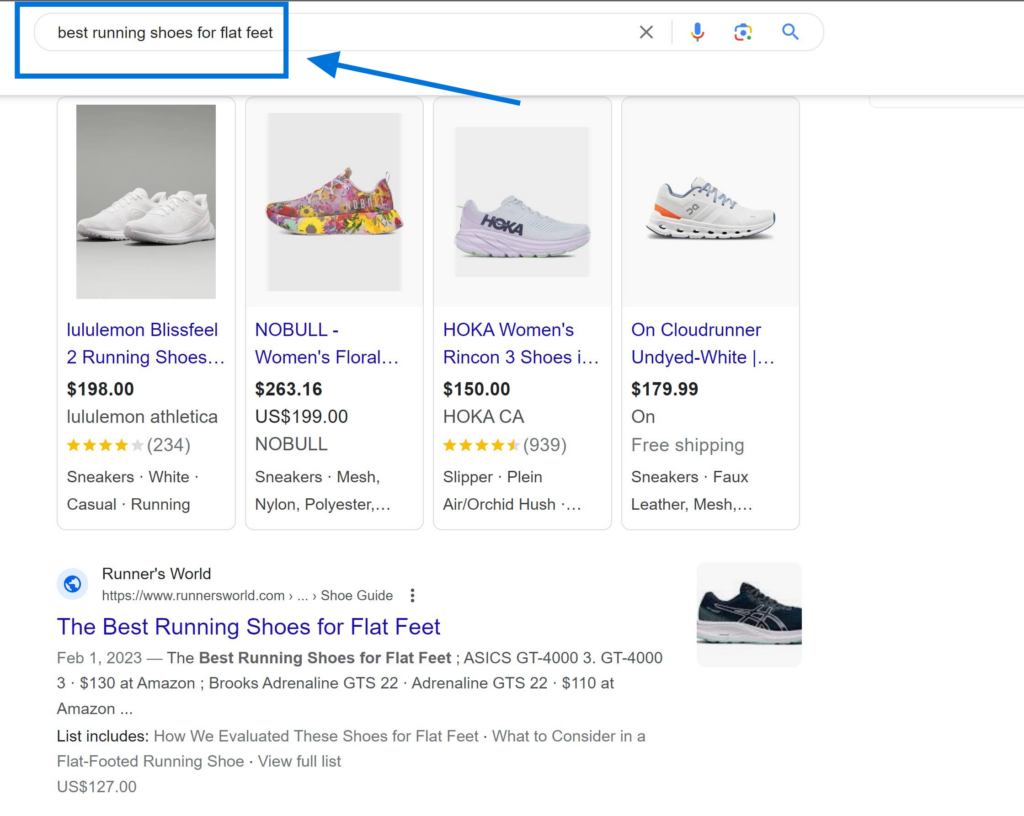
Focusing on long-tail keywords helps you target users who are closer to making a purchasing decision.
Conducting SERP analysis can be beneficial in determining the competitiveness of specific keywords. By examining the top-ranking pages for a given keyword, you gain insights into your competitors’ strategies and understand the level of competition you may face.
Take note of the content quality, backlink profiles, and on-page optimization techniques employed by your competitors to refine your own approach.
Leveraging Google Search Console can provide valuable information about keyword performance. This tool offers insights into how often your website appears in search results for specific keywords and associated click-through rates.
By analyzing these metrics, you can identify keywords that are driving traffic to your site and make informed decisions regarding further optimization efforts.
How to Research Keywords for Your SEO Strategy and Formulate a Content Strategy
Developing a Comprehensive List of Target Keywords
To create an effective SEO strategy, developing a comprehensive list of target keywords is crucial. This involves considering factors such as relevance, search volume, and competition.
Relevance ensures that the keywords you choose accurately reflect the content and purpose of your website. Search volume indicates how frequently users search for specific keywords, helping you prioritize which ones to focus on. Competition refers to the level of difficulty in ranking for certain keywords.
When conducting keyword research, consider using tools like Google Keyword Planner or Ahrefs to gather data on search volume and competition. These tools provide valuable insights into popular keywords in your niche and help you understand what your target audience is searching for.
Once you have gathered a wide range of potential keywords, it’s important to narrow them down based on their relevance to your business and their potential impact on your SEO efforts. Consider the intent behind each keyword and how well it aligns with your offerings or content.
Categorizing Keywords for Effective Content Planning
After developing a list of target keywords, categorizing them can greatly aid in content planning.
Organizing keywords into primary, secondary, and long-tail categories allows you to prioritize which ones should be targeted more prominently within your content.
- Primary Keywords: These are the core terms directly related to your business or industry. They usually have higher search volumes and stronger competition but are essential for establishing relevance in your niche.
- Secondary Keywords: These are related terms that support your primary keywords. They often have slightly lower search volumes but can still attract relevant traffic.
- Long-Tail Keywords: These are longer phrases that are more specific and less competitive than primary or secondary keywords. While they may have lower search volumes individually, they often drive highly targeted traffic with higher conversion potential.
By categorizing your keywords, you can create a content strategy that focuses on targeting primary keywords while incorporating secondary and long-tail keywords to enhance the overall SEO performance of your website.
Aligning Content Strategy with Identified Keywords
Once you have categorized your keywords, it’s time to align your content strategy accordingly.
Start by identifying the pages or sections of your website that are most relevant to each keyword category. This will help you create an SEO roadmap for optimizing existing content or developing new content that targets specific keywords.
When optimizing existing content, ensure that the primary keyword is incorporated naturally throughout the page. This includes using it in headings, subheadings, meta tags, and within the body text. However, avoid overusing the keyword, as this can negatively impact readability and user experience.
For creating new content, brainstorm ideas based on each keyword category. Consider what information or solutions your target audience is seeking when searching for those particular keywords.
By providing valuable and optimized content that addresses their needs, you increase the chances of attracting organic traffic and improving your search engine rankings.
Optimizing Your Website with Targeted Keywords
For website owners looking to boost their visibility on search engines and draw in more organic traffic, search engine optimization (SEO) is a crucial tool in the digital world. Strategic and user-friendly incorporation of targeted keywords throughout your website is one of the most important aspects of SEO.
By optimizing your website with relevant keywords, you can improve your chances of ranking higher in search engine results and reaching your target audience effectively.
Incorporate Target Keywords Naturally Within Your Website’s Meta Tags, Headings, URLs, and AlT Text.
To optimize your website with targeted keywords, it’s important to integrate them naturally into various elements of your web pages. Start by focusing on the following areas:
- Meta Tags: Craft compelling meta titles and descriptions that include relevant keywords while enticing users to click through from the search engine results pages (SERPs). These tags provide a concise preview of what users can expect when they visit your site.
- Headings: Structure your content using heading tags (H1, H2, etc.) and incorporate targeted keywords within them. This not only helps search engines understand the context of your content but also makes it easier for users to navigate through different sections of your webpage.
- URLs: Optimize the URLs of each page by including relevant keywords. Search engines favor short and descriptive URLs and make it easier for users to remember and share links to your site.
- Alt Text: When adding images or other media elements to your web pages, use descriptive alt text that includes targeted keywords. This helps search engines understand the content of those visuals and improves accessibility for visually impaired users.
Optimize Page Titles and Meta Descriptions to Entice Users to Click Through from The SERPs.
Page titles and meta descriptions play a significant role in attracting potential visitors from search engine result pages. To optimize these elements effectively:
- Page Titles: Craft unique and descriptive titles for each page, incorporating targeted keywords near the beginning. Keep them concise, preferably under 60 characters, to ensure they are fully displayed in the SERPs.
- Meta Descriptions: Write compelling meta descriptions that accurately summarize the content of your web pages while enticing users to click through. Include relevant keywords naturally within the description, but avoid keyword stuffing.
Ensure Keyword Placement Throughout Your Website Is Strategic Yet User-Friendly.
Striking a balance between strategic keyword placement and user-friendly content is crucial for successful optimization. Here are some best practices:
- Content Optimization: Incorporate targeted keywords naturally within your website’s content, ensuring it flows seamlessly and provides value to your audience. Avoid overusing keywords excessively, as this can lead to a poor user experience and potential penalties from search engines.
- Internal Linking: Utilize internal links within your website’s content to guide users toward other relevant pages on your site. This helps with navigation and spreads link authority throughout your website, and reinforces keyword relevance.
- User Experience (UX): Prioritize providing an exceptional user experience by organizing your content logically, using clear headings and subheadings, and ensuring fast-loading web pages across different devices. A positive UX encourages visitors to stay longer on your site and increases the likelihood of conversions.
How to Incorporate Keywords into Your Content?
Integrating keywords into your content is crucial for effective SEO. By strategically incorporating target keywords, you can improve your website’s visibility and attract more organic traffic.
However, it’s essential to do this in a way that maintains readability and avoids keyword stuffing.
Here are some tips on how to incorporate keywords into your content effectively:
Integrate Target Keywords Organically Within the Body of Your Content While Maintaining Readability.
When creating page content or blog posts, ensure that your primary keyword appears naturally throughout the text.
Aim for a seamless integration rather than forcefully inserting the keyword at every opportunity. This will help search engines understand the relevance of your content without compromising its quality.
To achieve this, consider the context of each sentence and paragraph. Use variations of your primary keyword to add diversity and depth to your writing.
For example, if your main keyword is “content strategy,” you can also use related terms like “online content” or “content marketing” to provide a well-rounded discussion.
Use Variations of Your Primary Keyword Throughout the Article or Webpage.
Using synonyms and related words can enhance the overall optimization of your content while avoiding repetitive language. It helps search engines recognize different facets of your topic and increases the chances of ranking for various relevant search queries.
For instance, if you’re writing about optimizing images on a webpage, you can include related terms like “alt text,” “markup,” or even specific image formats (e.g., JPEG, PNG). This not only helps with SEO but also provides valuable information to readers who may be searching for specific details.
Aim for An Appropriate Keyword Density (around 1%-2%) without Overstuffing.
Keyword density refers to the percentage of times a keyword appears in relation to the total number of words on a page. While it’s important to include keywords in strategic locations, such as headings, subheadings, and meta tags, excessive keyword usage can be detrimental to your SEO efforts.
Maintain a natural flow by focusing on the quality of your content rather than obsessing over specific keyword counts.
Search engines are becoming increasingly sophisticated at understanding context, so prioritize providing valuable information to your audience instead of solely catering to search algorithms.
Additional FAQs on Keywords in SEO
How Often Should I Update My Keywords?
It is recommended to monitor keyword trends and update your keywords accordingly regularly. This ensures that you stay relevant and continue to target the right audience.
Can I Use the Same Keywords for All My Web Pages?
While it is important to have consistent keyword usage across your website, each page should focus on specific keywords related to its content. Tailor your keyword selection based on the unique nature of each page.
Should I Prioritize Search Volume or Competition when Selecting Keywords?
Ideally, you want to strike a balance between search volume and competition. Aim for keywords with moderate search volume but lower competition to increase your chances of ranking higher in SERPs.
Are Long-Tail Keywords Better than Short-Tail Keywords?
Long-tail keywords tend to be more specific and less competitive than short-tail keywords. They allow you to target a niche audience who are more likely to convert into customers.
Can I Rely Solely on Paid Advertising Instead of Optimizing for Organic Search Results?
While paid advertising can provide immediate results, optimizing for organic search results through effective keyword usage is a long-term strategy that can lead to sustainable traffic growth without ongoing ad spend.
Conclusion: Keywords in SEO
In conclusion, keywords play a crucial role in the success of your SEO strategy.
By understanding the importance of keywords and how to research and incorporate them into your website and content effectively, you can improve your search engine rankings and drive more organic traffic.
Throughout this guide, we have explored various aspects of keywords in SEO. We learned about the different types of SEO keywords, such as short-tail and long-tail, and how they impact your online visibility. We discussed the basics of keyword research, including finding relevant keywords for your specific niche.
Analyzing search volume and competition is another vital step in selecting effective keywords to help you stand out. By identifying high-search volume yet low-competition keywords, you can increase your chances of ranking higher on SERPs.
Furthermore, we delved into the process of researching keywords for your overall SEO strategy while formulating a solid content plan. This involves aligning keyword research with user intent to create valuable content that resonates with your target audience.
Optimizing your website with targeted keywords is essential for search engines to understand your site. By strategically placing relevant keywords within meta tags, headings, URLs, and throughout your content, you can improve your site’s visibility to both search engines and users.
Lastly, we explored how to incorporate keywords seamlessly into your content without compromising its quality or readability. Balancing keyword usage with natural language ensures that search engines and human readers find value in what you offer.
To succeed in SEO through effective keyword usage:
- Continuously monitor keyword trends.
- Regularly update and optimize existing content.
- Create new high-quality content based on keyword research.
- Stay up-to-date with algorithm changes from major search engines.
- Monitor competitors’ keyword strategies for inspiration.
Following these guidelines and implementing a strong keyword strategy can improve your website’s visibility, drive targeted traffic, and ultimately achieve your SEO goals.
